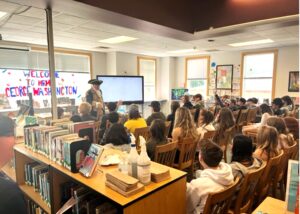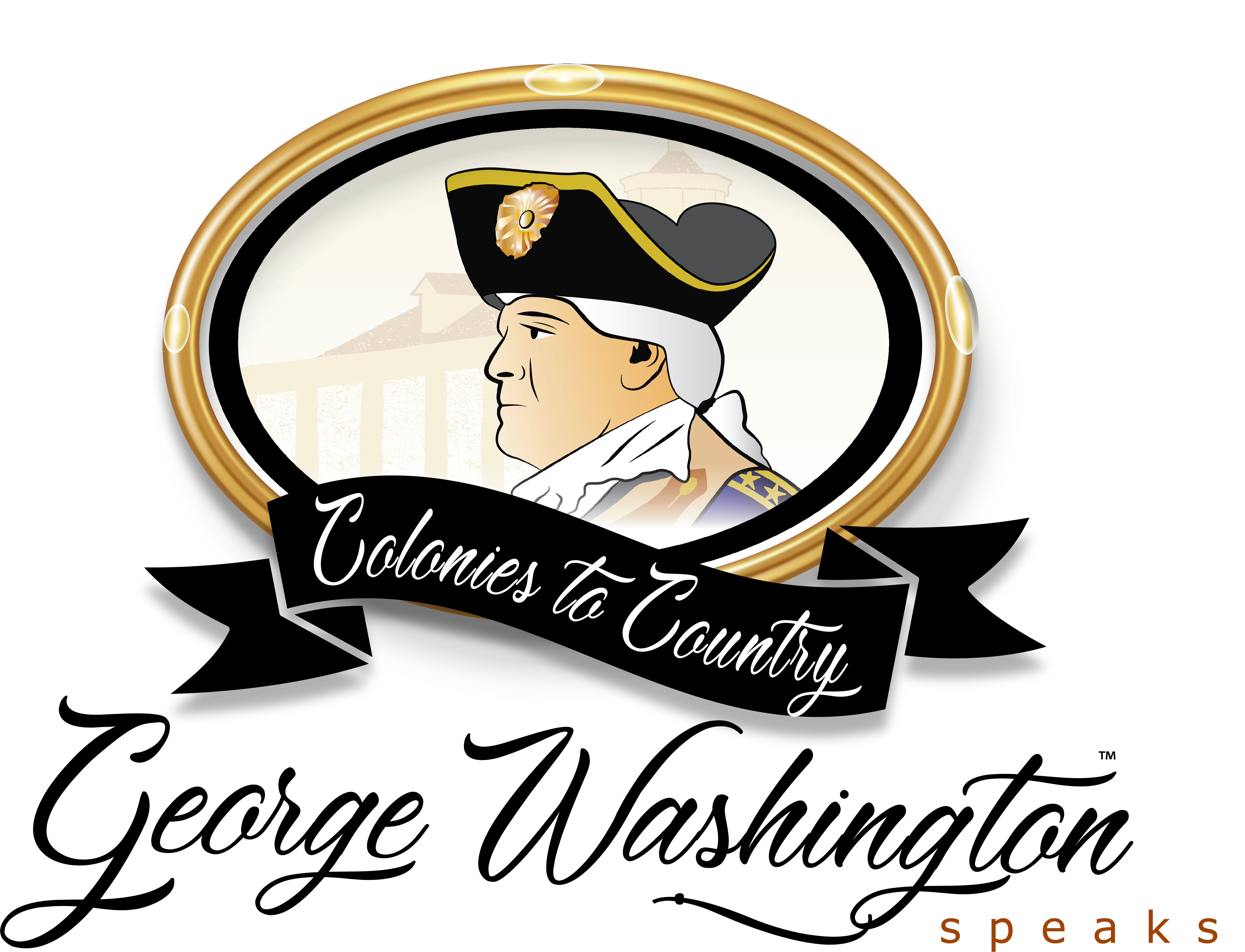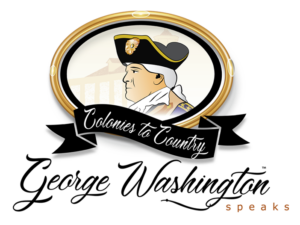
GEORGE WASHINGTON SPEAKS BLOG ARTICLES
OUR ARTICLES ARE CURRENT SO CHECK BACK AND KEEP UP ON OUR EVENTS AND NEWEST VIDEOS.
ANNIVERSARIES AHEAD! AMERICA’S 250th BIRTHDAY OFFERS TEN YEARS OF CELEBRATION
Movements are underway across the United States to celebrate the 250th anniversary of the signing of the Declaration of Independence. While the major focus is on July of 2026 for America’s birthday party, the celebrations have already begun. It started in Boston Last month, Boston hosted a celebration of the Boston Tea Party, an event in December of 1773 that lit a fuse for the revolution to come. (You can read about it in this Boston Herald article.) The tea was subject to a British tax imposed on the colonists, and they expressed their outrage by the “destruction of the tea” as the event was called at the time. In a letter to his friend George William Fairfax in June of 1774, George Washington wrote, “the Ministry [in England] may rely on it that Americans will never be tax’d without their own consent [and] that the cause of Boston … now is and ever will be considered as the cause of America.” Washington did not support the destruction of private property. In the same letter he said “not that we approve of their cond[uc]t in destroying the Tea.” So, while he supported Boston’s rejection of the unjust tax, he considered destruction of property the wrong approach against it. (View our short video about the tea destruction.)
Later this year you may see commemorations of the First Continental Congress, which brought together delegates from the American colonies in Philadelphia to work together rather than individually against Britain’s “intolerable acts” against the colonies. Washington’s military leadership begins In 2025, watch for reenactments and celebrations of the shot heard ‘round the world, the first armed engagement of British forces and colonial militia at Lexington and Concord, Massachusetts in April of 1775. Later that summer, George Washington was appointed Commander-in-Chief of the Continental Army, and went to Boston, the focus of conflict at the time.
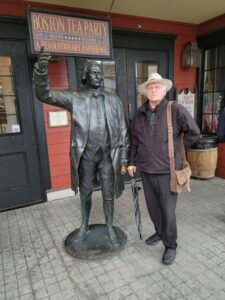
The 250th anniversary of the Declaration of Independence will be the highlight of 2026, followed by a series of specific battle anniversaries and remembrances in the ensuing years. The French alliance will be celebrated for the critical support it offered the continental forces.
Success is in sight!
In 2031 we can expect celebrations of the decisive Battle of Yorktown, at which British General Cornwallis surrendered to the Continental Army. This is considered the final major battle of the war, although the Treaty of Paris wasn’t final until 1783—another opportunity for a 250th anniversary.
That will complete ten years of celebrating the success of the American Revolution. If you have ever wanted to participate in reenacting historical events, this would be a great time to get involved. Your friend Google can help you find reenacting groups in your area. George Washington Speaks will celebrate these events with new videos and presentations, and you can be part of it!
If you are interested in research, script writing for videos, portraying characters, or sharing other ideas, please contact me via email. I’ll be very interested to hear from you!
In whatever way you choose to participate, I look forward to celebrating America’s revolutionary history together.
HOME FOR THE HOLIDAYS
George Washington’s iconic home, Mount Vernon, wears out like any other home. For 45 years, George himself oversaw and expanded the Mansion. As a child, he had lived in the home his father built in 1734, which was gradually expanded to the house we know today. After passing through the hands of his brother, niece, and his widowed sister-in-law, George first leased and then inherited the estate.
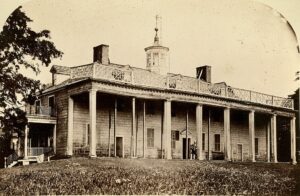
Owned and operated by the Mount Vernon Ladies Association since they bought it in December of 1848, Mount Vernon requires constant maintenance and occasional major restorations and renovations. A significant project is under way now on the Mansion from 2023 to 2026. (Many outbuildings are also preserved on the estate.)
HVAC for preservation
In Washington’s day, his home relied on fireplaces, windows, and doors for heating and cooling. For the thousands of daily visitors to his home now, those sources are not adequate.
An underground utility bunker near the Mansion has been expanded to house updated heating, ventilation, and air conditioning equipment. This replaces a system installed in 1999 in the cellar. The older system prevented some areas of the cellar from regular inspection, and due to humidity, some structural elements have deteriorated. This damage can now be repaired, and the new system will provide climate control in the cellar for the first time. When the project is complete, more of the cellar will be accessible to visitors.
Drainage for the cellar
Many of us have lived in or known of homes with a damp cellar—or even flooding—due to rain and groundwater intrusion. Washington himself dealt with this, and the drains he installed in the cellar have been uncovered in the course of repair work.
Despite his early efforts, dampness in the cellar has continued to cause problems, so new, underfloor drains are being installed.
How did the Washingtons use their cellar? They stored food and supplies, a familiar use for today’s “basement” areas. The cellar also housed a kitchen for use by the enslaved household staff. And at least one staff member is believed to have lived in the cellar.
Framing and masonry repairs
Scientific study of the Mansion’s first-floor joists has determined the date of construction to be 1734, when Augustine Washington, George’s father, owned the estate. Moisture and termites caused damage to the wood framing, and by the late 1800s several localized areas were repaired. Unfortunately, the repairs did not always take into account overall structural issues, and a more comprehensive repair is now needed.

(Photo by Martin Falbisoner)
Can you imagine all you would need to remove from your home’s structure to reach and repair the wooden framework within? And to do all that without damage, so it could all be replaced when the work is finished? The Mount Vernon Ladies Association is devoted to preservation of the Mansion as it was when Washington lived there, and I’m thankful that craftsmen are available today with the skills to do that work.
As for masonry, the stone and brick components in the 18th century were softer than today’s, and the mortar used to hold them together was also a soft mortar. Modern “Portland cement” is much harder. Repairs made during the last century using modern cement have contributed to the deterioration of the original brick and stone elements. A historic soft mortar will be used to replace the hard mortar, bringing these structural elements into a more original state.
Christmas at Mount Vernon
The Washingtons celebrated Christmas with special foods and traditions, as many of us do. At Christmas in 1787, George surprised the household and guests by hiring a camel to be brought to Mount Vernon. This year, Aladdin the camel will amuse visitors to the estate from November 26 to January 6. Special seasonal activities include a candlelight mansion tour, chocolate making, fifing demonstrations of 18th century holiday music, and fresh baked gingerbread.
One Washington family holiday tradition you can follow at home is baking Martha’s Great Cake. The recipe is available at Mount Vernon’s website.
Visiting Mount Vernon during preservation
If you plan to visit Mount Vernon—which I highly recommend—be sure to consult their website so you know what to expect during this busy time of restoration. Some parts of the mansion must be closed to allow this work to take place. However, the estate has many other attractions and a wonderful museum.
George Washington is quoted as saying “I had rather be on my farm than be emperor of the world.” As Washington said in 1797, I now send you “the compliments of the season, and the return of many, many more, and happy ones.”
Learn more about George Washington Speaks on our website.
GEORGE WASHINGTON at HARBOR RIDGE MIDDLE SCHOOL
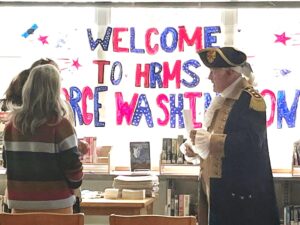
This is the fifth year that George Washington has personally appeared at Harbor Ridge, a middle school in Gig Harbor, Washington. Students prepared a welcome sign that reflects their enthusiasm to hear from the first president. They knew they could ask any questions they wanted of him. I gave five presentations (a combination of seven classes) to eighth graders as part of their American History studies. Each of the five groups had a different personality, and they put George to work with their questions. It was exhilarating!
Preparation
Before my visit, the teachers at Harbor Ridge Middle School submitted questions that their student wanted to ask George. Their primary interest was George himself. Knowing their questions in advance allowed me to craft a presentation just for them. And planning my visit in conjunction with their American History curriculum allowed the students to prepare, and consider questions for me that they might not otherwise have thought about.
In the Classroom
I began each presentation, dressed as General Washington, by asking them what they knew about me. They mentioned various facts about his family, education, social status and personality, and these were listed on a whiteboard. Then George filled in what they didn’t know about him. All of a sudden, George Washington became a real person, just like them. He had once been their age, and like any fourteen-year-old, he was awkward, shy, and fearful of being laughed at and made fun of.
Here are some of the questions we explored:
Was Washington wealthy or poor? Most thought he was wealthy and privileged, when actually, he was both.
Was he from a two-parent family? Most thought he was from a typical, two parent home, when the correct answer was “Yes and no.”
Then General Washington filled in the missing information, giving them more context about my life. In history—like many areas of life—context is everything.
Washington’s Family Life
Washington’s father married and had two sons, and then his first wife died. His father remarried, had six children with his second wife. George was the eldest of the second wife’s children, and when George was eleven, his father died. George’s father was a wealthy farmer and entrepreneur, and his sons would all have been well educated and wealthy—if their father had lived. But the bulk of wealth went to his two older half-brothers by primogeniture. Those older brothers had already been educated at a prominent school in England, something George had hoped for too. But his mother was left with a small farm, and chose not to remarry, so from age eleven, he was raised in poverty by a single mom.
This was a surprise to the students at Harbor Ridge. So you see, context is everything.

In the photo above, the young lady on the right is five feet tall, about the height of George when he was eleven, while the young man on the left is about six feet tall and about the height of George when he was fifteen. During those four years, George grew more than twelve inches, but his mother could not afford to buy him new clothes. She had to let out the clothing on the right to fit the body on the left.
George asked the student on the left: How are you feeling about wearing the smaller, older clothing?
He answered: Not good.
George gave some context with the next Question: Oh, by the way, wearing older clothes that are not in style and don’t fit, also includes the three or four socially important dances throughout the year where you meet young people from all around northern Virginia. Now how do you feel about being poorly dressed and the object of glances from those who are much better dressed?
Answer: Awkward. Embarrassed.
Question: Laughed at? Made fun of?
Answer: Silence.
Historical Interpretation
I have not found stories from Washington’s social life as a youth in anything I have read. Was the context true? Yes! His father died, he was part of the second family, a single mom raised him in poverty, his lack of education dogged him throughout his life, he was shy and awkward, and the local dances provided social opportunities. Fear of being laughed at? That detail is not recorded, but what do you think? This is part of historical interpretation.
The historical record provides a lot of information about George Washington’s life, and life in the colonies during his lifetime. My reading of more than one hundred books, visits to historical locations, and interviews with various authors, historians, and other specialists—all this informs the way I interpret and present Washington’s life.
After Class
After each presentation at the Harbor Ridge Middle School, the students came up to get selfies and ask individual questions. This young man had a couple of questions about Martha.
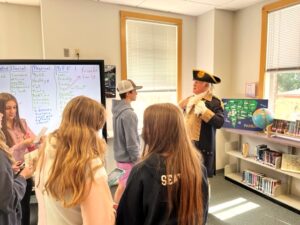
George accommodated him and then shared that five-foot-tall Martha would stand on her tip toes, grab his coat lapels and pull him down to get his attention, and then she would say “Now listen here old man”!
The students’ individual questions cover many topics, and reflect a strong interest in Washington and the founding of America. Likewise, the topics requested by teachers vary—some ask me to focus on the French and Indian War and Washington’s early military experience. One group wanted me to talk about agriculture and gardening at Mount Vernon, as Washington was renowned in his day for his expertise and experimentation with agriculture and animal husbandry. Learn more about George visiting students in their classrooms here https://georgewashingtonspeaks.com/for-students/
Can George Washington visit your classroom?
